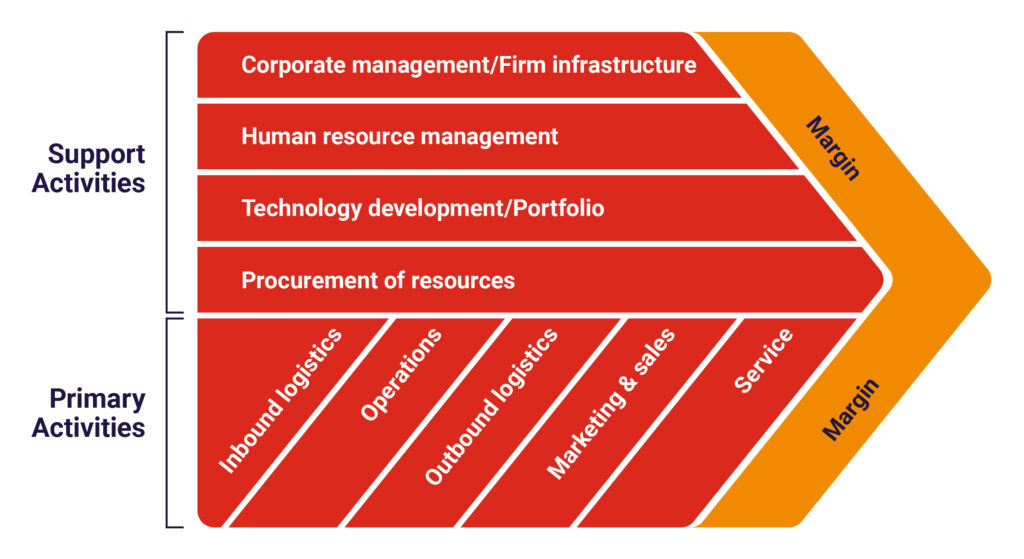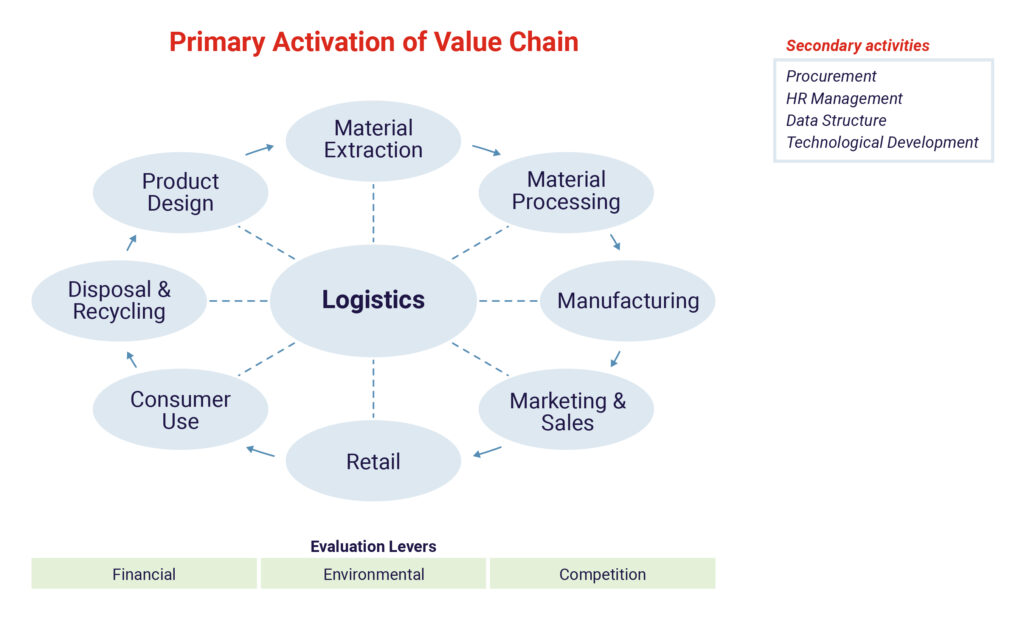Consumer Trends, Value Chain 29 October 2024
Value Chain: Where you can find the funds to grow
What is the role of value chain in wider brand growth? Read this introduction to value chain to discover the Sevendots approach to optimising value chain for growth.
Sevendots, Zug
3 minute read
The first definition of value chain was created in 1985 by Michael Porter. Back then, the definition of primary activities and secondary activities have been the key drivers for building an understanding of each company’s value chain.

‘Value chain’ vs ‘supply chain’
Let’s start with a simple comparison between supply chain and value chain: A supply chain delivers products and services, a value chain delivers value! So understanding your value chain, namely where the value is created and added is key. That understanding forms the basis for building a solid company strategy, improving products for better consumer appreciation and can offer savings programs for GM improvements or funds for growth.
While the basics have remained the same, the last 40 years have added some additional elements to be taken into account. The biggest change is the focus on environmental targets in addition to financial ones. With this comes the extension of the value chain framework to include the pre- and post-processes of a company’s business activities. The other one is digitisation with technology developments like blockchain, AI or the integration of physical and virtual experiences. Today’s value chain analysis demands a more sophisticated perspective:

The benefits of broader value chain management
Most companies focus their savings programs within supply chain management, focused on procurement, manufacturing and logistics. This more siloed approach limits the savings potential and does not capture inter functional savings potential, as well as failing to take the customer/consumer and the competition into account as part of the business strategy. This means losing out on an opportunity to optimize value chain activities, and missing out on developing a competitive advantage: creating and sustaining superior performance.
In the current environment of increased competition, a deep understanding of the value chain in comparison with the competition and consumer preferences is key to driving differentiation in the market. In a reality where both financial and environmental ambitions have to be met, it’s vital to have a deep understanding of where investments are paying off across the entire lifecycle, and where cost efficiencies are more important. Understanding the value chain is the key to this.
So what are the key benefits of knowing the value chain? In short: Identification of the sources of both positive and negative cost efficiency. A deep understanding of the value chain helps to identify core competencies and areas of potential improvement. This forms the basis of the virtual circle of growth: Smart savings delivery to create the funds for growth and investment into those areas where growth and differentiation can be driven – that drives further cost efficiencies.
The increased focus on environmental targets is a great example, showing how value chain has become increasingly important. It’s the only way to create an integrated strategy, realising growth ambition and savings programs while fully understanding the interdependencies – it’s the basis to achieve all targets at the same time. Done in the right way it includes an understanding of consumer preferences and the competition, which is vital for the success.
Support activities for maximising the value chain
To understand your value chain we can guide you in the following steps:
- Define and understand each of the primary and secondary activities in your (extended) business
- Analyse the cost and value of each activity
- Identify competitive advantage opportunities
- Take strategic choices to achieve cost savings or competitive advantage in each the activities
Contact Sevendots today to discover more.
